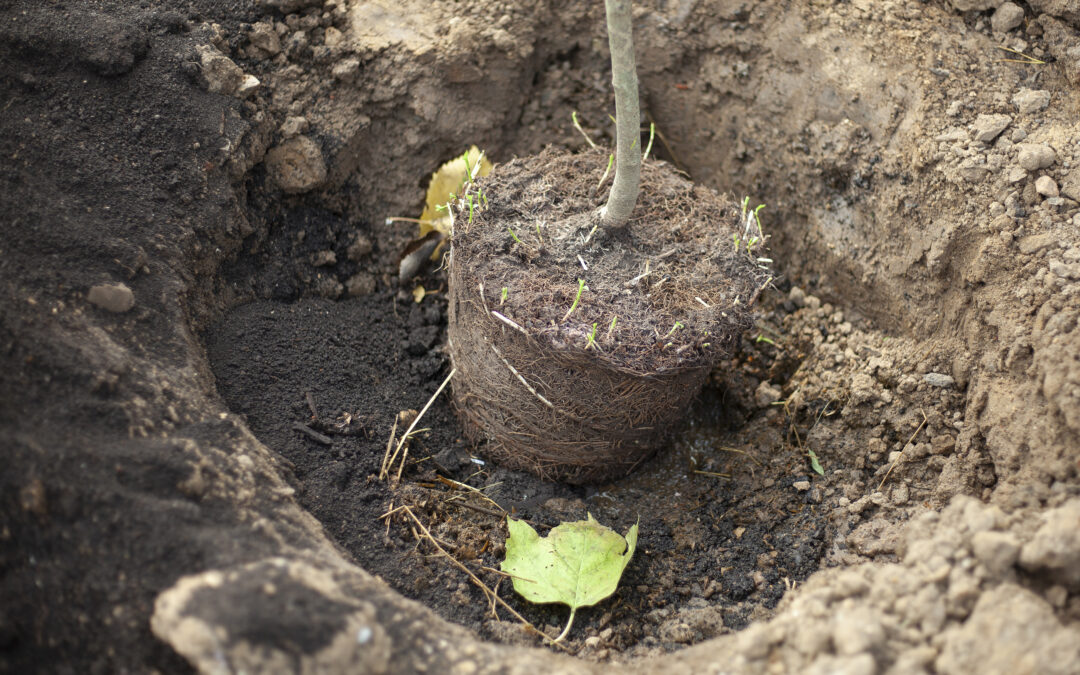
Frontier Landscaping offers Tree Planting as one of our many Professional Landscaping Services
Frontier Landscaping provides a tree planting service, we can also help with the care of young trees. It is important to develop a plant care regimen of initial watering and fertilizing to establish newly planted trees. We also provide ongoing plant health care, such as tree pruning and regular watering, as the trees develop, particularly in the Summer dry months. Eventually trees will rely less on watering, as their roots develop and they find their own access to water and nutrients, by sending down tap roots. But initially, they’re reliant on us (the landscapers) and you (the homeowners) to make sure they have enough water.
Irrigation Installation
We can set up irrigation to ensure infrequent but deep watering, which is preferred by trees and helps them to develop deep root systems. Trees have very different needs to your vegetable garden. Irrigation sprays should not hit the base of the tree, as this could encourage crown and root rot. Watering should be applied at the drip line of the tree, where the tree naturally directs the water when it rains.
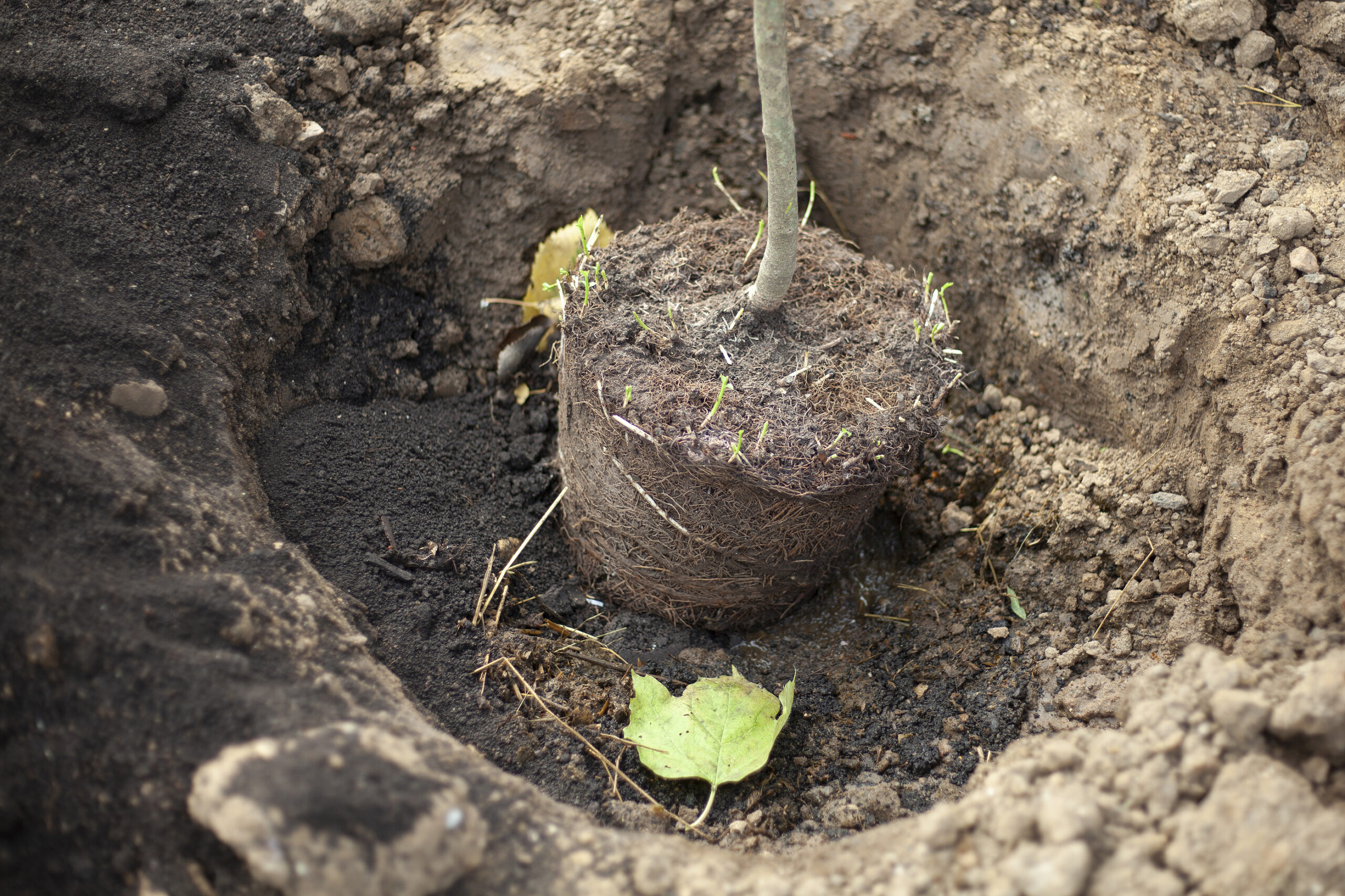
Our Tree Planting Service will Follow a Step by Step Guide, to correctly install your tree. It is important with installation, not to plant trees too high or too low. The tree crown should be just above grade or ground level. You don’t want mulch or soil piled up around the base of the tree, as it can encourage crown and root rot. We make sure to loosen the roots, so that they don’t continue to grow in the shape of the pot it’s removed from. Instead, the loosened roots will reach out into the surrounding soil, which is scraped with grooves, to encourage the roots to penetrate. We keep an eye out for circling roots, these roots can wind around the roots and trunk, and girdle the tree, cutting off supplies of food and water. A quick prune of these problem roots upon planting, can nip any problems in the bud!
Ongoing Tree Care from our Landscaping Service, will make sure that the tree has the greatest chance of growing up healthy and strong. Regular, seasonal applications of fertilizer, and inspection for pests and diseases, are essential, and a part of our regular maintenance visits.
Training a young tree
On planting, a tree will need staking to protect it. We place the stakes on the side of the prevailing wind, making sure to give the tree the support it needs. The ties should be supportive, but not be tied too tightly, so the tree has room to move in the wind and develop strength, just as we build muscles when we move. The tree will then need structural pruning as it grows. Lower branches are left on to give the young tree energy, but as the tree grows taller these branches can be taken off for clearance, or left on and shaped, depending upon the client’s need and the tree’s function in the garden. Regular pruning will help get ahead of any problems, removing excess weight from branches that could cause them to break in Winter storms.
Overall, young trees will benefit from the on-going care of professional experts. Providing care early on will help them grow and benefit your property and neighborhood. Scheduling regular ‘check up’ appointments for your tree will save you costs in the long run.
While midsummer is marked by long evenings, BBQs, and time spent outdoors, it’s also a critical time to check up on tree health after a season of intense winter distress. The consequences of a prolonged cold season can be quite serious and aren’t always recognized from the ground unless you know what to look for.

Greg Irwin, Frontier’s ISA-Certified Tree Service Manager, shares: “After an abnormally long winter and short spring, we’re observing excessive rapid growth and full flushing of foliage on many trees. Our top recommendation for most situations is to have trees trimmed for thinning and perform crown reduction for weight issues, structure and balance.”
Winter Distress: What to Look For
Trees That Look Abnormally Full
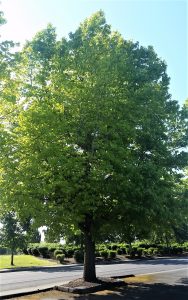
In years when winter is unusually cold, long, and intense, trees’ dormancy periods are extended – sometimes as much as a month to six weeks longer than average. When the severe winter is followed by a short spring, the result is a near “shock mode” of explosive foliage.
Look over your trees during or just after a rainfall. Do you notice them hanging atypically low, sagging down further than normal? This heavy bowing is likely the result of extra weight from an excess of foliage.
Trees Encroaching Heavily on Other Trees & Shrubs
Are you observing significant encroachment of your trees on other trees and shrubs, even if you had them pruned last year? Clearance issues are common as branches hang low over houses, driveways, and sidewalks.
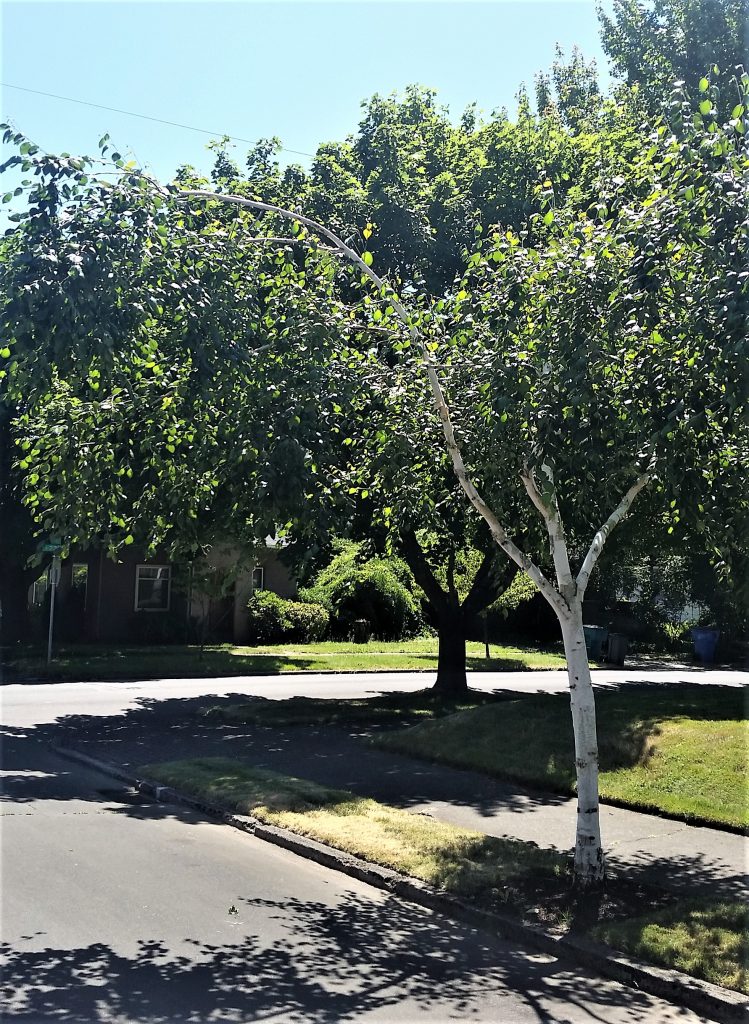
Bending, Bowing, and Breaks: What’s At Stake
While cabling and bracing can offer partial solutions, the increase in foliage after a prolonged winter puts even small limbs at risk of breaking due to extra weight, on almost any tree species. While larger limbs won’t break, they may bow out so far that they can’t be cabled and will have to be removed.
For large tree sections or limbs that were previously compromised or had beginnings of decay, rapid growth and the resulting excess weight can increase the stress on poor attachments tenfold. Healthy trees are at risk, too, as the weight alone can cause breakage for many ornamental varieties.
Birch trees are particularly susceptible due to their growth habits. If bowed limbs are not straightened up and cabled promptly, they may fail entirely.
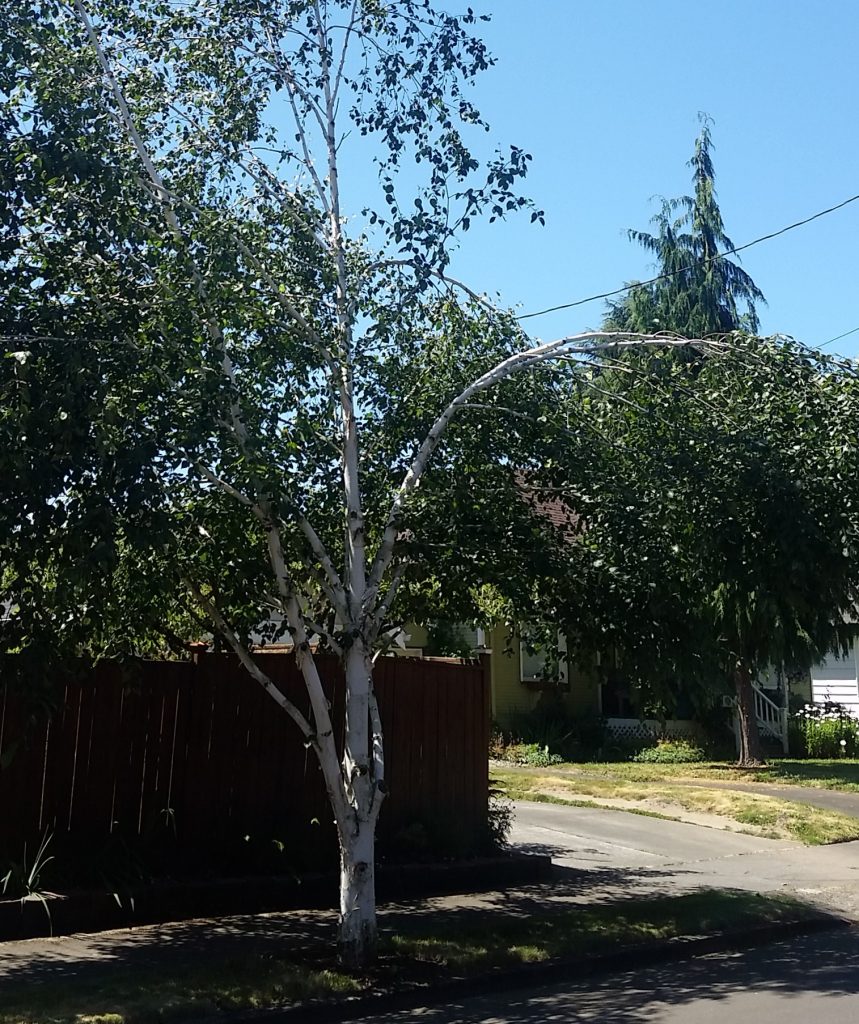
Hidden Issues in Healthy-Looking Trees
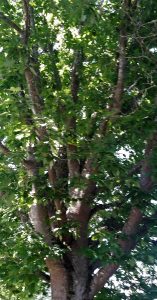 While bowing and sagging are easy to identify from the outside, other problems remain hidden and can catch you with troubling surprises later.
While bowing and sagging are easy to identify from the outside, other problems remain hidden and can catch you with troubling surprises later.
When a short spring and warm summer follow an extended winter, the speed of new growth can do quite a number on your trees from the inside out. As the growing season progresses, an abundance of internal suckers can create an environment that seriously affects the health of your tree overall.
Additionally, an exponential increase in new leaves means that autumn cleanup is going to be markedly more work than a more typical year as the litter layer dies and falls off. While this isn’t hazardous, a good pruning treatment is smart. Left unchecked, the amount of leaf drop can be doubled in volume, which means twice as much work to clean up later on.
Rescuing Your Trees From Winter Distress: What To Do Next
Call Frontier Tree Service to schedule services for your trees. Our highly-trained ISA-Certified arborists will expertly evaluate your situation and make the very best recommendation for the health and safety of trees around your home or business.

ISA certified arborist, Greg Irwin
“For the 2017 season, our top recommendation for most situations is to have trees trimmed for thinning, as well as perform crown reduction for weight issues, structure and balance.” – Greg Irwin, ISA-Certified Arborist and Frontier Tree Services Manager.
Frontier Tree Services include:
- Pruning
- Ornamental pruning
- Tree, shrub, and stump removal
- Cabling and Bracing
- Chipping
- Planting
- Risk Assessment
- Diagnosis & Treatment
- Cleanup
- 24/7 Emergency Tree Services
Call (360) 574-4125 or send us an email to arrange a consultation today.
Learn more about proper tree care by visiting the Frontier Landscaping blog.
It’s easy to call for tree service when you notice one of your trees doesn’t look well, but did you know that a tree that appears healthy can actually be on the brink of failure, too? This month we’re highlighting some key insights from our in-house expert, ISA-Certified Arborist Greg Irwin.
As a specialist in risk and hazard assessment, Greg’s mindset is always, “safety first”.
He shares, “Often homeowners don’t realize there are hidden hazards that have a higher potential to happen when a tree looks good, because there aren’t outward signs of illness or damage. A tree can look nice and healthy to an untrained eye and still fail (or have main sections fail) based on growth structure, attachment, and the way it has been previously pruned in the past.”
Species-Specific Issues
Several tree species are prone to failure because of their particular growth habits. If you’re unfamiliar with the risk factors, it’s more likely you’ll face long-term failure issues in main sections of your tree.
Flowering Pear
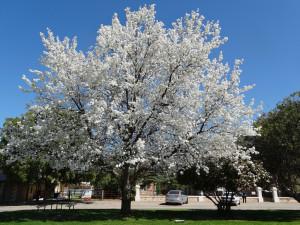
These towering beauties can harbor hidden danger when they’re allowed to establish without regular, skilled maintenance through pruning and having their canopy contained. They commonly form poor attachments, one of several genetic issues naturally occurring in the species.
While these issues aren’t preventable, they can be successfully controlled in a variety of ways if addressed when the tree is young (5-10 years old). Taking action early on eliminates future headaches and also causes less stress and effects on the tree.
Red Sunset Maple
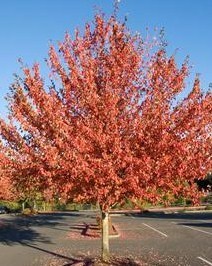
Red Sunset Maples are a favorite for their consistent, dramatic fall color. However, due to an all-vertical growth habit, it’s not uncommon for a weak attachments to become a high failure risk in mature trees. Like the flowering pear, early identification in young trees is critical to allow proper diagnosis and treatment. A certified arborist like Greg is rigorously trained to examine the multiple factors that come into play in each case and make the right call for safety and the health of the tree.
Leyland Cypress
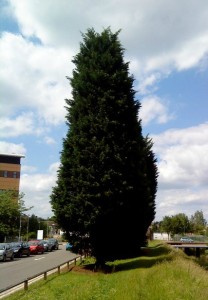
The mighty Cupressus × leylandii tops Greg’s list as the #1 evergreen that he and the Frontier Tree Service crews see split apart or even uprooted entirely due to winter failure–more than any other tree in the area.
Again, the main problem arises from genetics with this tree’s growth structure: vertical, very tall, and heavy-limbed. While the root system is wide, it’s also shallow and prone to retaining a lot of water (pushing the roots up to the soil’s surface). As the tree gets larger it doesn’t take a lot to tip it over. Yikes!
There’s good news, though. Young Leyland Cypress trees do well when they’re retrained as hedges. With early intervention and consistent maintenance, retraining reduces risk of failure around your home. The Leyland cypress performs well in this role, as it’s hardier than arborvitae and will flourish as a robust screen through its maturity.
Risky Roots
Attachments aren’t the only issues that can play a role in tree failure. In landscapes with a high water table, tree roots can be forced up towards the soil’s surface instead of spreading out and away. With heavy wind, the entire tree may be uprooted due to this instability.
It’s important to note that root issues like these are a leading cause of tree failure. The trained eye of a certified arborist like Greg takes multiple aspects into consideration when assessing risks and hazards around your home.
Safe Solutions
Greg reminds us, “every tree in every location is different. We always diagnose case-by-case to determine the need.” Pruning and cabling are two common solutions when a tree is able to be recovered.
Pruning
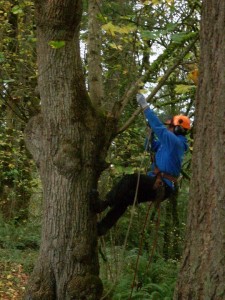
Pruning, which has several definitions, essentially involves removing plant parts to improve the health, landscape effect, or value of the plant. The Texas AgriLife Extension Service emphasizes the importance of skilled pruning:
“The old idea that anyone with a chainsaw or a pruning saw can be a landscape pruner is far from the truth. More trees are killed or ruined each year from improper pruning than by pests.” (You can read more in-depth on pruning here.)
Cabling
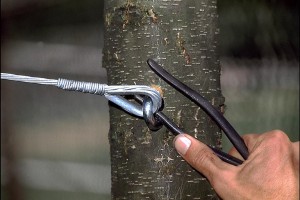
Cabling assists the tree in supporting itself during inclement weather, can strengthen a weak crotch, or raise lower hanging branches to the desired height. Like pruning, there are multiple approaches to cabling.
Greg states, “Cabling needs to be done by someone with experience. There’s a lot to know: where to cable, how to position, what type of cable to use depending on the calculated size/stress load so you know whether or not what you’re using is strong enough.”
If it’s been awhile since you’ve had your trees evaluated for these hidden hazards, give us a call to set up an evaluation. Greg and team will perform a thoughtful, thorough examination to save you from headaches and failures with the best knowledge and resources available. We are licensed, bonded, and insured, and are committed to using best practices set forth by the International Society of Arboriculture (ISA).

ISA certified arborist, Greg Irwin
*Why Hire a Certified Arborist?
An arborist, by definition, is an individual trained in the art and science of planting, caring for and maintaining individual trees. Arborists are knowledgeable about the needs of trees and are trained and equipped to provide proper care. Certified Arborists are individuals who have achieved a high level of knowledge and experience and pass a comprehensive examination developed by some of the nation’s leading experts on tree care. Certified arborists must adhere to a stringent code of ethics and continue their education to maintain their certification. Learn more about certified arborists and tree safety at Trees are Good and ISA.
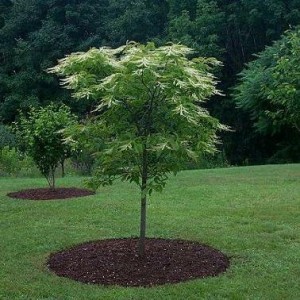
With its modest profile and year-round interest,
Oxydendrum arboreum – known commonly as sourwood – is one of the great trees for small spaces with a history of healing. The oval-shaped tree grows 20-25 feet tall.
The winter interest of many trees includes interesting bark and sourwood doesn’t disappoint. As the tree matures the bark becomes gray, ridged and scaly. Pioneers used to chew sourwood bark for mouth pain, draw its sap to relieve fever and brewed leaf tea for digestive maladies. Today sorrel leaf tea is widely used to slake the thirst of mountain climbers.
In spring the branches take a back seat to glossy green leaves 5-8 inches long and sour to the taste, hence the tree’s common name.
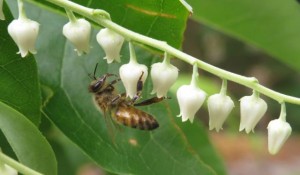
Summer ushers in drooping 4 to 8-inch clusters of waxy, fragrant white blooms very much like lily-of-the-valley. These are enticing to bees and in areas where the tree is endemic, sourwood honey is highly prized by locals.
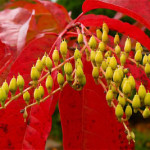
The flowers make their parting bows, making way for unusual fruit that looks like brown, wooden capsules and contain numerous pointy seeds.
Enjoyable as the year has been, the show really begins in fall as the tree’s generous leaves take on intensely beautiful shades of brilliant crimson, purplish-red and sometimes yellow.
Winter, spring, summer, fall: Oxydendrum arboreum shines as a lawn specimen, a garden feature, an ornamental addition to larger trees or as a clump in a wide open space.
We tend to think or decide that there isn’t much to do in the yard once fall rains and winter cold arrive. Some figure their yard won’t look good again until next spring after a good deal of work.
The good news is, whether you’re a commercial enterprise or a homeowner, several tasks done in the off season make it possible to have a healthy and attractive landscape year round. The steps you take to winterize your landscape will become visible throughout the spring and summer. Which projects apply to you?
Paths & Patios
Anywhere you end up walking through mud when you would prefer not to is an opportunity to solve a problem and beautify your surroundings. One solution is the use of paving stones. They drain well, can be configured to an area of any size or shape and offer endess possibilities in creating attractive, affordable walkways, patios, retaining walls and more.
Pruning
Most pruning is done in the winter. It’s important to check trees every year for dangerous, damaged or unattractive limbs or odd growth habits. There may be trees you’d like removed, whether for safety or aesthetic reasons. Whether a tree has outgrown its space, is poorly placed, poses a threat or otherwise just bugs you, doing away with it makes a huge difference in your yard’s appearance.
Winter’s a favorable time for hedge trimming and tree and shrub thinning. Your plantings will look all the better for it next season.
Clean Up
Don’t batten down the hatches until you’ve clear the decks of weeds, fallen leaves and other debris. They spread disease, smother the lawn and increase next year’s slugs and weeds! Watch for hidden nooks and crannies where leaves tend to congregate or weeds go unnoticed. Steps, sidewalks, driveways, decks and patios have been subjected to abuse over the past year and if not tended to now may grow slick and slimy come winter. Moss treatment and/or pressure washing may be in order.
Water Features
If a water feature is large enough, it may be best to keep it running all year, not only for the pump’s sake but for that of the fish. Smaller features should be drained and properly protected for the season.
Irrigation Systems & Drains
It isn’t until the weather gets really wet that we remember that spot in the yard where water always pools or runs in the wrong direction. Let us help you remedy the situation with a free assessment to discover whether you’d benefit from the installation of a drain or culvert. Irrigation systems vary, but most require expressing air through the system to blow out any remaining water.
Gutters
Need we say more?
Lighting
Stroll around to make sure all outdoor lighting is firmly secured and in working order. You may see areas where you could use more lighting. For information on low-voltage landscape lighting, see our recent blog!
Plant Care
Annuals typically die when temperatures drop below freezing; the entire plant should be removed. Perennials may die down, but they will be back bigger and better next year (there’s also time to divide and transplant them). Any dead foliage and surrounding debris should be removed. If you mulch, keep it back from the root crown by a few inches. If a hard frost threatens, it may be a good idea to heap some protection over them such as pine branches, straw or cloth for the duration.
Be Wise: Winterize! Frontier Landscaping has a systemized weatherization program adaptable to any property. Our professionals are well versed in the best practices for every aspect of landscape design and installation, maintenance and expert tree service. Contact us today!
Many trees need special care in the summer including extra water and proper pruning. Frontier Tree Service is here to help take care of all your tree needs. Whether you have one tree or a whole forest, our team of certified professionals is available for a variety of services.

Summer Fruit Tree Pruning
This is a great time of year for summer pruning on most fruit trees, especially fall-bearing trees like apples and pears. This helps to keep their shape and size at the level you desire. It also helps to remove excess fruit that the tree cannot support. This needs to be done in the next month before fruit production gets close to harvest.
Evergreen Pruning
Now is also the right time for pruning back broadleaf evergreens like rhododendrons, camellias and azaleas. They benefit from a hearty cutback from year to year. This will help set blooms for next year and will keep their size and shape neat and tidy.

- Tree Planting
- Ornamental Pruning
- Tree Removal
- Stump Grinding
- Cabling and Bracing
- Risk Assessment
- Emergency Services
Questions?
Contact us with all your tree questions and ideas. We are always available!







 While bowing and sagging are easy to identify from the outside, other problems remain hidden and can catch you with troubling surprises later.
While bowing and sagging are easy to identify from the outside, other problems remain hidden and can catch you with troubling surprises later. 





 With its modest profile and year-round interest, Oxydendrum arboreum – known commonly as sourwood – is one of the great trees for small spaces with a history of healing. The oval-shaped tree grows 20-25 feet tall.
With its modest profile and year-round interest, Oxydendrum arboreum – known commonly as sourwood – is one of the great trees for small spaces with a history of healing. The oval-shaped tree grows 20-25 feet tall.
 The flowers make their parting bows, making way for unusual fruit that looks like brown, wooden capsules and contain numerous pointy seeds.
The flowers make their parting bows, making way for unusual fruit that looks like brown, wooden capsules and contain numerous pointy seeds.

